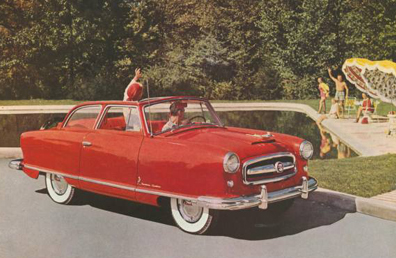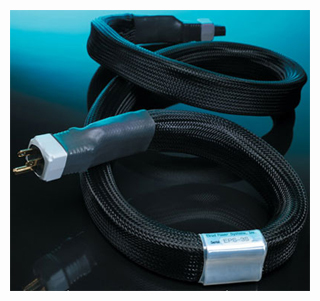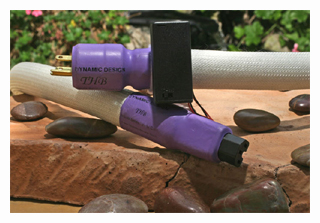You are reading the older HTML site
Positive Feedback ISSUE
july/august 2007
Audio Ramblings - the EMM CDSA SE player with
Jena Labs the One and 916 AC cord, plus a few words on SACD playback
by Dave Clark

In the last issue I reviewed the EMM CDSA SE one-box
player and enthused as to how great a machine Ed had put together for the
audio/music enthusiast. I loved how the player expounded on dynamics, slam, bass
definition, and resolution, along with such a beguiling sense of tonal
neutrality—or as I termed in the review: tonal linearity. In the review I did
prefer the Cary 306's sense of musical color and overall musicality to that of
the CDSA SE, though the Cary does stray from the tonally linear-straight as an
arrow camp of neutrality. I do like this though, as it mates better than the EMM with our system
and music. Yes, on the Cary I
can, to a great degree, audibly shift this issue with different AC cords Using an Elrod EPS-2 Signature, one can get even more warmth and color as
opposed to a more linear presentation as experienced with the Emotion cord from Kubala-Sosna. Finding the right AC cord for the Cary lands me in the Dynamic
Design camp with their THB Nebula digital cord. This cord is rather in the
middle of what the Elrod and Kubala-Sosna produce, letting me hear the best of both worlds
without straying too far in either direction.
With the EMM, I had the option of the stock AC cord (the player is supplied with a "basic" Kimber AC cord), the Elrod EPS-2 Signature, a Kubala-Sosna Emotion, an Audience AC cord, as well as entry level cords from JPS and DH Labs. Of the lot, I found that the Elrod serving the EMM the best, with the others either not allowing the player to strut its stuff or moving the performance tonally/audibly too far to one side—that is, the player's basic inherent character became too much of a good thing. Besides, when the player first came into the system, I was using the Elrod on the Cary and I wanted to compare oranges to oranges—so I used an Elrod on the EMM as well. It made sense as I knew what the Elrod sounded like and I would not be throwing an unknown into the mix.
 During
the review time, the Dynamic Design cables arrived with the THB Nebula digital
AC cord working well with the Cary by taking it up a few
notches, while at the same time, moving it a few notches in a desired and
appreciated direction (now becoming tonally more linear with less bloom and warmth/fullness—less darker and now more open).
One the othe hand, the Nebula did not mate well with the EMM. With this
player, well…. once again the truth of AC cords raised its idiosyncratic head. You got to find what works best with what, in that there are absolutely no absolutes in
audio—not even the absolute sound! What cord works well with component A, might
not be the best bet for component B, though it could! Meaning that even though
the Dynamic Design cord moved the Cary towards a better direction, it
tended to move the EMM towards the wrong direction. So what to do? I want to get
the best from the player, and in talking to Rick Gardner, he suggested that the
cord for the EMM is that from Jena Labs. Not just a Jena AC cord mind you,
but the Jena Labs' the One AC component cord. (Note: Yeah, all these cords
are quite spectacular, but you got to find that one magic combo—which
should not, nor can not be construed as a slight against any of them, just the
facts. Different cords work differently with different components.)
During
the review time, the Dynamic Design cables arrived with the THB Nebula digital
AC cord working well with the Cary by taking it up a few
notches, while at the same time, moving it a few notches in a desired and
appreciated direction (now becoming tonally more linear with less bloom and warmth/fullness—less darker and now more open).
One the othe hand, the Nebula did not mate well with the EMM. With this
player, well…. once again the truth of AC cords raised its idiosyncratic head. You got to find what works best with what, in that there are absolutely no absolutes in
audio—not even the absolute sound! What cord works well with component A, might
not be the best bet for component B, though it could! Meaning that even though
the Dynamic Design cord moved the Cary towards a better direction, it
tended to move the EMM towards the wrong direction. So what to do? I want to get
the best from the player, and in talking to Rick Gardner, he suggested that the
cord for the EMM is that from Jena Labs. Not just a Jena AC cord mind you,
but the Jena Labs' the One AC component cord. (Note: Yeah, all these cords
are quite spectacular, but you got to find that one magic combo—which
should not, nor can not be construed as a slight against any of them, just the
facts. Different cords work differently with different components.)
The One ($1800) is a stand-alone AC filter with an integral AC cord at either end (pretty much chop a Jena Labs' 916 cord in half and install the One filtration box in the middle, well there is no doubt way more to it than that, but you get the idea...). With the One, there is no need for separate AC filtration, you got one in the One already. You plug the One directly into wall so it can feed nice clean AC into the chosen component. Naturally the issue is that you would need a One for each component, but the cool thing is, then they would all be on their own AC filtration with no chance of contaminating each other with their crap. With the One in the system, I would not be listening to the EMM through the Audio Magic Transcendence, which would take that parameter out of the equation. The Transcendence has shown itself to be a very neutral AC conditioner by not passing much if any sonic signature—unlike other units have done—into the system and music. Even so, the Transcendence does have its own character of speed and clarity. It has a fast open sound, and is tonally neutral—meaning anything plugged into it sounds that way as well. It does not make things darker or richer or warmer or whatever, though you can to some degree do this with its filter matching, but it is rather subtle at best. The Transcendence is perhaps though, not a good thing with the EMM—too much of what they both do well may compound the issue of the EMM's overall character with that of the Transcendence—the result being that they might be a poor match for each other sonically.

So what's in the One? Well, the One features in a scaled-down version of what Jennifer has developed in her more elaborate and substantial stand-alone units—simply put, her stuff is quite effective at getting rid of AC gremlins and such. Jennifer is not one to pass out to the public what she is doing circuit wise, so I am unable to say what is actually in the box; whether it be capacitors, flux-capacitors, ferrites, ferrets, or whatever. What I can tell you is that it uses her wiring in a special weave geometry combined with a smallish metal box containing the filter circuit to work its magic.
What one gets with mating the Jena One with the EMM is a match made in audio heaven. All the strengths and character traits of the player are kept in place—though they are magnified in a positive way which maximizes their audibility. The Jena also brings a very desirable sense of rich musicality to the EMM equation. With the One, the player takes on a very natural sense of color and warmth that was audibly missing before, though perhaps to a level that is a bit too far towards that end of the musical arc. Even so, with the One in the chain, it was almost as if this sonic and musical character had been held in check prior to the Jena entering the mix. Nothing is lost as this color does not diminish the player's resolution, transparency, or speed and clarity. It is still quite linear, but wow, how much nicer it all is with the One! More flesh and heft (call it healthy fat) to them bones, making it oh so luscious and captivating! Way smoother with not a hint of that ever so slight edge I had heard earlier. The EMM was now as smooth as the proverbial baby's bottom.
With this increase in richness, warmth, and overall smoothness, I heard no grain, grit, glare, noise, or whatever that could mask the music—meaning that the One was cleaning up the AC rather well. The music had a wonderful flow and naturalness to it that made listening to anything we could toss into the EMM player quite enjoyable and captivating. Smooth, rich, and clean it was...
But was all this a bit too much? Is the One combined with Jena wiring going too far in this direction? I only say this as I have heard from others who have experience with her wiring, that its character is that of being smooth and tonally rich. Even so, I loved what the One was doing to the music, but it did seem that perhaps I had moved a bit too far in the direction of euphonic richness and warmth. Yeah, the music had a very warm and tubed-like presence, but in my system, perhaps this is not the right absolute balance. There was smidge less visceral-ness to much of what we listen to, not anything that was a deal killer, but still …we do like to chase after things, now don't we? And since it is all a matter of balance, well ...had I swung the system too far towards that end of the spectrum? Could I swing back just a bit and get the best of both worlds? This is a question I asked myself in wondering what a Jena AC cord would sound like going into the Transcendence. In trying the One with other components (the Cary 306 was not available at the time as it was with Cary for an upgrade), I found that the One did impart a sense of warmth, richness, and fleshy-er-ness-ness to varying degrees in other components as well; all becoming a bit smoother and less visceral and all that too—also to varying degrees. None of this is a bad thing, it's just a different thing. Even so, WOW, the Jean One is a fabulous component!
Anyhow I requested a separate Jena Labs AC cord to audition, as I wanted to see just what her cord would do sans the One conditioner in the chain. The 916 has the same wiring and weave that is used in the One, but there is no One conditioner in the middle. Cool. All Jena's stuff comes with a slow deep cryogenic freeze. The AC cord features rather simple yellow male Hubble AC plugs at the end of nine copper woven wires (the AC plugs are chosen based on their performance sound-wise in that they are to have as little impact—that being negative or any sense of a coloration or character unto itself—on the sound as possible).
-
Practical functionality and safety with predictable results from industrial grade components.
-
Full immersion cryogenic treatment is our standard of critical electrical performance parts.
-
Fabrication to the highest standards exceeding all conventions for their AC rated use.
-
Wire is finest stranded copper TFFN machine tool grade available anywhere.
-
Basic Cryo Power Cord uses Seoprene® (Mil Spec) for the cord material.
-
Connectors ends with standard clamped and then exceptional electrical connectivity with cardas quad eutectic soldering.
-
Connectors are internally filled with a high-grade dielectric potting that results in extreme durability and very long life.
-
Our standards in "JENA braiding conventions" results in flexibility far better than the usual expectations in audio power cords.
-
EVERY power cord is hand made... and hand tested for correct polarity and functionality under real AC power conditions.
Would the cord by itself have a character, that when mated with what the Transcendence brings into the mix, allow the EMM to swing a bit closer to my perceived desired middle ground? So into the Transcendence goes the Jena Labs 916 power cord and I got to tell you that this was it! Now I had the balance back to where I ultimately preferred my music to be—right smack in my absolute middle of the musical arc. The Jena 916 cord brought everything into a balance that was, and is, quite captivating with the EMM. The warmth, richness, and smoothness were still evident, but more in balance with the rest of the spectrum. Yes, they were diminished in quantity, but not in quality or nature. This is an issue of taste and/or preference, as I have had many an audio nut over who can felt they could go either way, but each has its strengths. Ultimately you got to live with something long-term, and since it is up to us, well …we know where we want to live. The EMM/Jena combo with the Transcendence and its option of filter matching (with this combo I like filters 1 and 2 on, with 3 off) sounded wonderfully magical; it is where we want to be fulltime. Any perceived faults of the EMM player are now a thing of the past. It would be stellar if Ed could include this cord with the player, as opposed to the Kimber, but obviously cost is the issue.
This combo (the 916 and EMM) is a winner and one that I plan on buying as soon as the account allows. The Jena 916 is rather affordable at $880, so it should not take long to work that out with my financial manager. Highly recommended, as is the One conditioner.
Jena Labs http://www.jenalabs.com
A bit on SACD
Okay, after posting the EMM review I took a bit of criticism from our readership that my evaluation player did not cover its SACD performance far enough to satisfy their curiosity. Yeah, in the review I admitted as much in that we really do not have that many SACD titles, the ones we do have are not really our cup of tea, and because of this,we do not have all that much experience with SACD to make it a valid assessment.
So out we went and ordered a bunch of recommended classical titles on SACD, tossed them into the Cary and EMM to get a bearing, and well... not so sure I am the one to say which player is the better choice. See, both are very, very good as SACD players (as as Redbook players too). Each reveals SACD to be a wonderfully musical format that is quite nice. Yeah, the EMM sounds really, really good on SACD, though I can not say that any of the titles sound different or better than their Redbook versions as we do not have duplicate titles. I would assume that the SACD is better though, duh... it had better be considering what we are dealing with. What I can say is that the EMM certainly did not disappoint me in its SACD playback, it had no issues in reading any of the discs we tossed its way, and what we heard was quite musically enjoyable—even though the music is new to us. But so was the Cary, it sounded very good too. Which is better? Well, each player still has is own sonic characteristics, in that what they bring to the table in Redbook (what we heard with our regular titles) is similar to what one gets in SACD. Perhaps less so, in the sense that the two players sound more alike in SACD than they do in Redbook (their basic characteristic differences become less so)... the EMM is still more linear than the Cary, but the Cary is still bigger and warmer/richer tonally. Of course the Jena 916 cable or the One tossed into the mix, these differences become a moot point. And with that, that is all I can offer.
